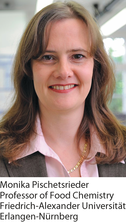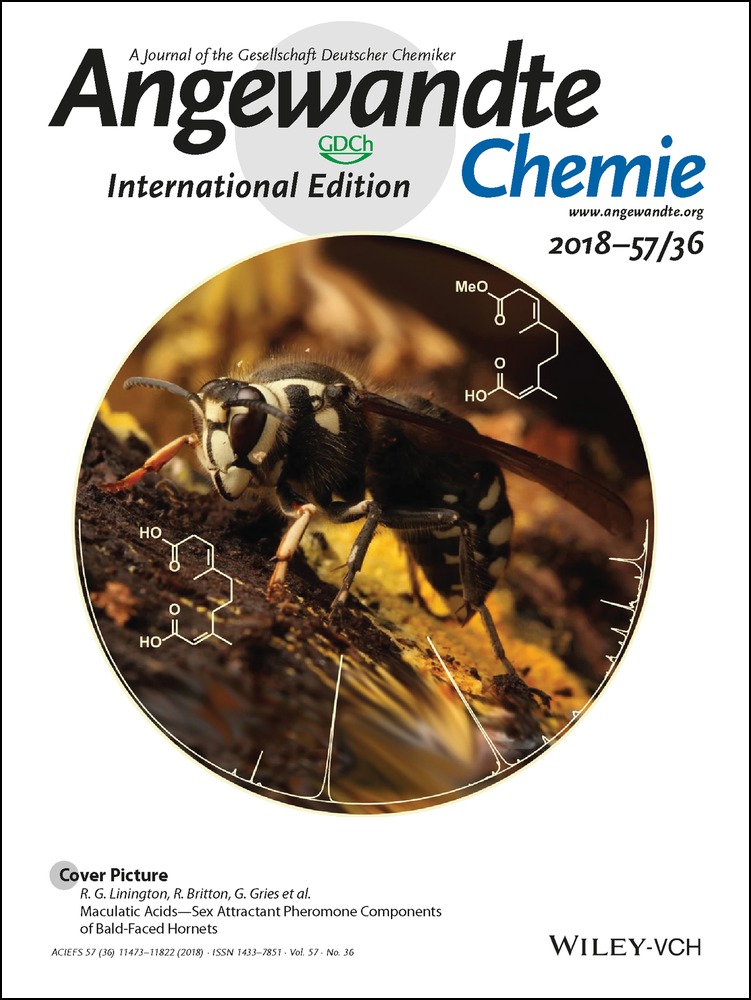Global Food-Related Challenges: What Chemistry Has Achieved and What Remains to Be Done
Graphical Abstract
“… Food chemistry has the important task to improve food security by the development of applicable strategies to give perishable products longer shelf lives. The discovery of unknown food contaminants and adulterants that are not being searched for is crucial in order to avoid scandals and to provide safe and pure food for the consumer …” Read more in the Guest Editorial by Monika Pischetsrieder.
Food Security
Although the prevalence of hunger is decreasing, almost 11 % of the world population, equivalent to 795 million people, are still undernourished.1 Taking also “hidden hunger” into consideration, which is defined as a deficiency of nutrients despite sufficient energy supply, this number rises to 2 billion people. The struggle against (hidden) hunger cleary requires interdisciplinary efforts including, among others, agricultural science, economics, politics, and social sciences. However, a closer look at the numbers reveals that food security cannot be achieved by growing agricultural production or fair global distribution alone. About 450 million tons of food and, specifically, 45 % of all fruits and vegetables are lost instead of consumed.2 The conventional wisdom that food waste is mainly a problem of wealthy consumers who do not appreciate the value of food seems to be a misconception. By far, the majority of food is wasted between production and retail and quantities differ only little between Europe, North America, or Sub-Saharan Africa. Therefore, an important task for food chemists remains to develop tailor-made solutions and innovative technologies for food preservation, processing, and packaging.
Food Safety
It is, however, not sufficient to produce enough food, but imperative that this food is also safe. A food is considered as safe if the concentrations of food contaminants or natural ingredients with adverse health effects are below defined threshold levels, and if illicit ingredients or additives are not present. These goals are most reliably achieved by rigorous and continuous food control on all levels of the food system including producers, retailers, and food authorities. These combined efforts mean that food safety levels in Europe are now very high. Tea, for example, has been routinely checked for more than 600 undesired components before we enjoy it for breakfast. These control tasks can only be mastered through highly sensitive and multiplexed analytical techniques, mainly multidimensional hyphenated chromatography and mass spectrometry, such as LC-MS/MS or GC-MS/MS. Thus, it is possible, for instance, to cover more than 300 pesticides in one run with detection limits down to the low μg kg−1 range. Consequently, the levels of contaminants are generally very low in countries with good food control systems and well-equipped laboratories. Nevertheless, food issues arise periodically, which alarm the public and/or experts such as the recent discovery of the insecticide fipronil in eggs (public) or the presence of pyrrolizidine alkaloids in herb tea and spices (experts). Usually, these issues are related to emerging or unexpected contaminants. For example, it was long overlooked that weeds with naturally high levels of toxic pyrrolizidine alkaloids growing next to herb fields may accidentally find their way into the crop. The contamination remained undiscovered because the sophisticated analytical techniques used for food control generally work in a targeted mode. Consequently, we only find what we are looking for.
Food Authenticity
In a similar way, the detection of food adulteration, that is, the unlabeled replacement of one food or food component by a cheaper alternative, may be hindered by the targeted operation of analytical techniques. Although food fraud is widespread and constantly on the rise owing to the increasing globalization and complexity of the food trade, the problem often appears less agitating than issues of food security or food safety. Is it a real problem or only annoying, when we eat unrecognized cheaper foreign asparagus which was labeled as a more expensive German one? Apart from the huge financial damage, however, which is estimated to 30–40 billion USD yearly, food adulteration may also cause serious health problems. For example, in 2017, the Europol- and INTERPOL-coordinated Operation OPSON VI discovered several cases in Germany where hazelnuts were replaced by cheaper peanuts. The unrecognized presence of strong allergens may consequently cause severe and even fatal allergies.
From an analytical standpoint, the successful detection of food adulteration faces two major challenges. One is the verification of “soft claims”, such as animal welfare, fair trade, or climate-friendly production, where analytical chemistry by nature may reach its limits simply because product differences are not mirrored by different chemical compositions. The second challenge is again the targeted mode of analysis applied in food control. Can a food chemist at a food control authority possibly foresee that melamine, a highly toxic industrial waste product, is used for the production of infant formulas to fake higher protein contents? Probably not, but we can only find what we were looking for. Therefore, similar to the detection of food contaminations, the detection of food fraud would greatly profit from the application of untargeted methods.
Call for Untargeted Analytical Approaches
Currently, the use of untargeted methods for the detection of unexpected and unknown contaminants and adulterants is still in its infancy. The most promising approaches are based on NMR spectroscopy and LC-HR(high resolution)-MS/MS. 1H NMR has the advantage of being universal—which is the major prerequisite for an untargeted screening method—since most food components contain a detectible H−X bond. Furthermore, 1H NMR analysis is fast and easy to handle so that it is suitable for routine screening of a high number of food samples. For example, melamine addition to an infant formula sample would have been striking in a general, quick 1H NMR screening even if the problem was unknown. However, components with low abundance or those that overlap with major food ingredients would not be covered. Consequently, 1H NMR could become a high-throughput method to screen food products and categorize them as “different”, if prominent adulterants are present. The detected difference must then be identified by other methods.
In contrast to adulterants, which replace, by definition, a good part of a valuable ingredient, traces of unknown contaminants will, however, not be discovered by NMR. LC-HR-MS/MS has a similar broad coverage of different types of analytes, but, in contrast to NMR, its separation power and its sensitivity are immense. In the last decades, the field of “omics” sciences, such as proteomics, peptidomics, metabolomics, volatomics, or lipidomics have shown huge progress so that the technical opportunities are impressive now. The combination of several hundreds of components covered by each “omic” approach provides a comprehensive picture of the composition of a food sample, including even low traces of contaminants. However, we face a different challenge using MS screening: it is likely that an unknown contaminant is detected, but unlikely that it is recognized. Huge amounts of data are generated and have to be evaluated to categorize a sample as “different”. Additionally, comprehensive databases must be generated to decide if a “difference” in a sample is alarming or just a harmless variation of the normal situation. Thus, not the improvement of the technical parameters, but of data management will be necessary.
In conclusion, food chemistry has the important task to improve food security by the development of applicable strategies to give perishable products longer shelf lives. Innovations in analytical food chemistry, mainly the development and implementation of multiplexed and highly sensitive MS-based analytical techniques are an important reason, why very high levels in food safety and authenticity have been reached. Fundamental further improvements in both areas will, however, require the development of untargeted analytical approaches. The discovery of unknown food contaminants and adulterants that are not being searched for is still a long way away from routine food control; but it is crucial in order to avoid real and apparent food scandals and to provide safe and pure food for the consumer.






